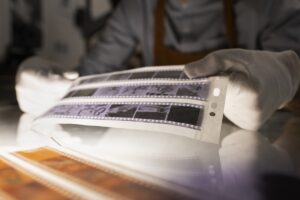Narrative films have always been more than entertainment; they serve as vivid mirrors to the societies that produce them. Through story, character development, and visual storytelling, filmmakers capture the emotions, conflicts, ideals, and evolving beliefs of their times. Observing how films reflect their cultural moment reveals much about both the art form and the historical context behind it.
Throughout history, every major cinematic era has provided snapshots of society’s heartbeat. During World War II, films often carried themes of patriotism, resilience, and sacrifice. In contrast, the social revolutions of the 1960s and 1970s birthed narratives that challenged authority, celebrated individuality, and pushed the boundaries of convention. Today, storytelling continues to evolve, addressing subjects like identity, mental health, and global interconnectedness.
Understanding how narrative films absorb and reflect the culture of their time requires looking at both the artistry behind the camera and the broader societal currents influencing the work.

Visual Storytelling: More Than Aesthetic Choices
In filmmaking, visual elements are critical tools for communicating cultural shifts. Directors make deliberate choices in color palettes, camera angles, lighting, and framing, often guided by the emotional and psychological tone of their era.
For instance, the highly stylized neon lights of 1980s cinema represented a fascination with excess and consumerism, while the grittier, hand-held aesthetic of post-9/11 dramas mirrored widespread feelings of instability and distrust. These stylistic decisions are cultural fingerprints, capturing the unspoken mood of the times.
Modern narrative filmmakers often blend stylization with realism, reflecting a world where social media blurs the boundaries between reality and fiction. This fusion of techniques allows today’s audiences to see their complexities mirrored on screen.
Evolving Narrative Structures
Classical narratives typically followed a predictable structure: a clear beginning, middle, and end. As societies grew more complex, so did their stories.
Non-linear storytelling, fragmented narratives, and ambiguous endings became common as filmmakers sought to represent the uncertainty and complexity of modern life. Contemporary films often reflect the reality that life rarely follows a simple, predictable path.
This evolution in storytelling style has opened up new creative possibilities. Rather than delivering a simple moral or resolution, films can now explore ambiguity, prompting audiences to wrestle with meaning themselves, much as individuals must do in their daily lives.
Themes Reflecting Social Shifts
The subjects filmmakers choose to tackle are perhaps the clearest reflection of cultural concerns.
- In the 1950s, fears of nuclear annihilation drove the popularity of science fiction and monster movies.
- In the 1970s, films like Taxi Driver and Apocalypse Now explored disillusionment with government and society after the Vietnam War.
- In today’s cinematic landscape, we see pressing concerns about mental health, environmental crises, gender identity, and systemic injustice taking center stage.
Narrative films don’t merely entertain; they engage with the world’s pressing issues, often challenging viewers to think critically about the world they live in. Filmmakers act as cultural commentators, using storytelling to provoke thought, empathy, and sometimes action.
Technical Aspects as Cultural Expressions
Beyond narrative and theme, the technical craft of filmmaking—editing styles, sound design, camera movement—also reflects cultural evolution.
For example, the frantic, fast-paced editing seen in many modern action films aligns with a world conditioned by high-speed internet, constant notifications, and shortened attention spans. In contrast, slower, meditative pacing in some independent films reflects a cultural counter-movement toward mindfulness and deeper contemplation.
Technical innovation in cinema often parallels broader technological and societal changes. The emergence of digital filmmaking democratized the art form, allowing more diverse voices to participate in storytelling than ever before.
Film Festivals as Cultural Barometers
Film festivals are crucial in identifying and amplifying cultural shifts. They provide platforms for underrepresented voices and emerging themes that may not yet have mainstream traction.
The Lady Filmmakers Festival, which champions the creative work of women, is an example of how festivals are shaping the future of film by promoting inclusivity and diversity. Recognizing new narratives and storytellers ensures that film continues to evolve as an honest reflection of global society.
Case Study: UNIO MYSTICA and Modern Spirituality
A recent example of how narrative films explore contemporary themes is UNIO MYSTICA, a short film directed by Katharina Klewinghaus. Premiering at the Lady Filmmakers Festival 2023 in Los Angeles/Beverly Hills, UNIO MYSTICA delves into themes of spiritual searching and mysticism — concepts resonating deeply in a time when many individuals question traditional structures and seek personal meaning.
By crafting a narrative that invites introspection rather than providing clear answers, the film reflects broader societal shifts toward mindfulness, holistic wellness, and alternative spirituality. Through atmospheric visuals and a contemplative pace, UNIO MYSTICA embodies the cultural moment it was born from.
Katharina Klewinghaus’s background in both narrative and documentary filmmaking gives her a distinctive ability to weave authenticity and creativity together. Her approach exemplifies how today’s filmmakers act not just as storytellers, but also as cultural historians, capturing the spirit of their times for future generations to study and understand.
Conclusion
Narrative films are far more than scripted performances captured on camera; they are living, breathing reflections of the worlds that create them. From visual styles and thematic concerns to technical innovations and evolving narrative forms, every element of filmmaking carries the imprint of its cultural moment.
By examining films carefully, we can understand much about societal fears, dreams, transformations, and triumphs. Storytellers like Katharina Klewinghaus continue to advance this tradition, crafting works that both reflect and influence the evolving culture around them.
As society changes, so will the stories we tell — ensuring that cinema remains one of the most dynamic and illuminating cultural mirrors we have.